Fashion
Permanent Jewelry: A Lasting Fashion Statement
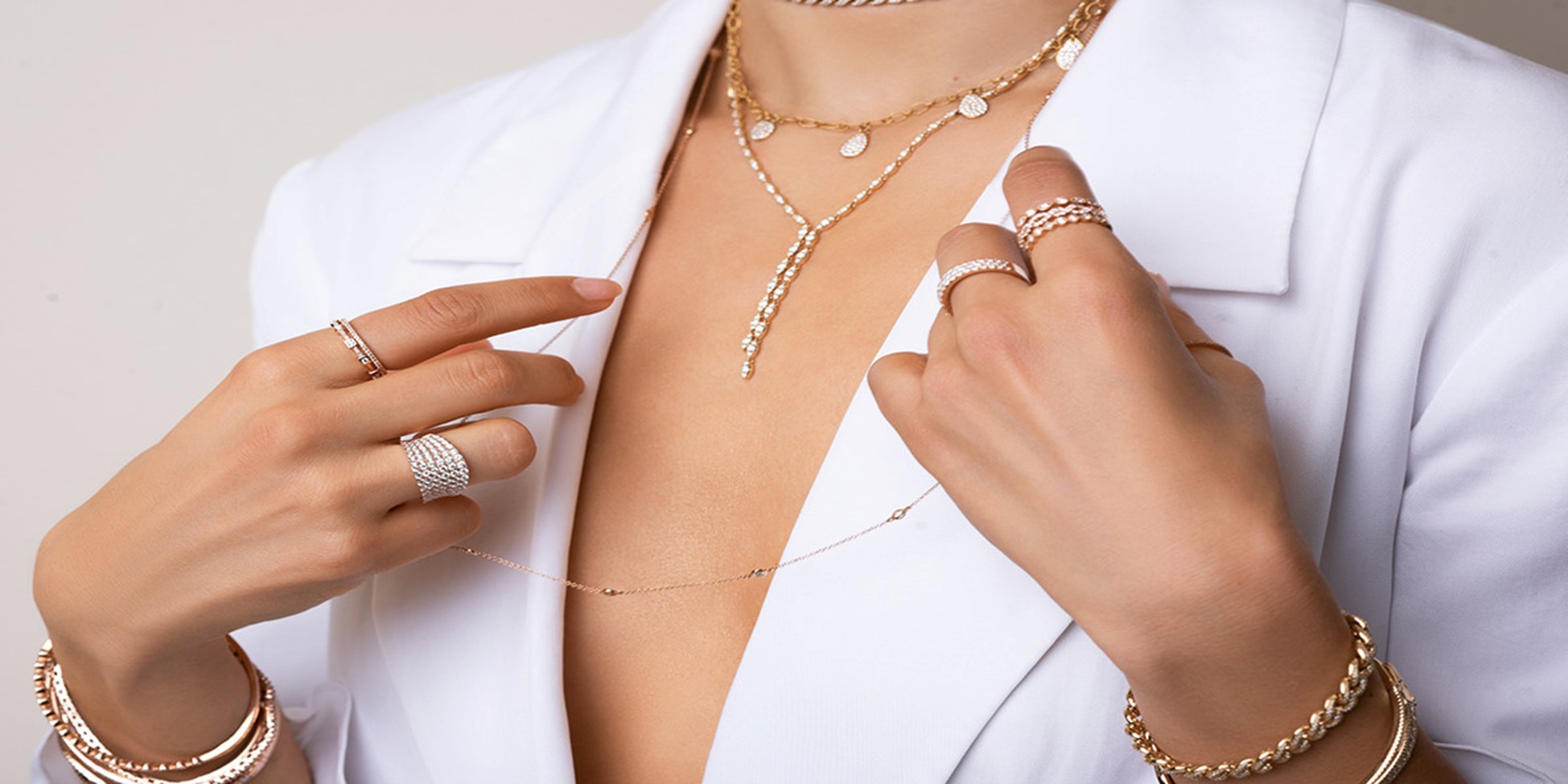
Fashion trends come and go, but the appeal of permanent jewelry is proving to be a timeless phenomenon. Unlike traditional jewelry that can be taken off and put on at will, permanent jewelry is designed to be worn continuously. This trend is gaining popularity for its unique blend of personal significance, convenience, and durability. From welded bracelets to forever chains, permanent jewelry offers a lasting fashion statement that resonates with those seeking both style and meaning in their accessories.
The Appeal of Permanence
One of the main attractions of permanent jewelry is the symbolism it carries. Much like a tattoo, permanent jewelry represents a lasting commitment. Whether it’s a bracelet shared between best friends, a necklace signifying a personal milestone, or a chain marking a significant relationship, these pieces serve as constant reminders of meaningful moments and connections. The permanence of these accessories adds a layer of depth and sentiment that traditional jewelry might lack.
Permanent jewelry also appeals to those who value simplicity and minimalism. With a piece of permanent jewelry, there’s no need to worry about taking it off before bed, during a shower, or before a workout. This convenience factor makes it an excellent choice for people with busy lifestyles who still want to maintain a sense of style. The ease of having a permanent accessory means it becomes a seamless part of daily life, blending functionality with fashion effortlessly.

Image by: Yandex.com
Craftsmanship and Customization
The process of creating permanent jewelry is an art form in itself. Skilled artisans carefully craft these pieces to ensure they are not only beautiful but also durable enough to withstand constant wear. The materials used, often high-quality metals like gold and platinum, are chosen for their resilience and longevity. This ensures that the jewelry remains a lasting adornment, maintaining its luster and elegance over time.
Customization plays a significant role in the appeal of permanent jewelry. Many jewelers offer bespoke services, allowing clients to design pieces that reflect their personal style and story. This could involve choosing specific metals, incorporating gemstones, or even engraving meaningful dates and initials. The result is a one-of-a-kind piece that holds unique significance for the wearer, making permanent jewelry not just a fashion statement but a personal artifact.
The Rise of Permanent Jewelry in Modern Fashion
Permanent jewelry is gaining traction in the fashion world, with many influencers and celebrities embracing this trend. The visibility of these pieces on social media platforms has contributed to their growing popularity. Influencers showcasing their welded bracelets or anklets, often accompanied by stories of their personal significance, inspire followers to consider permanent jewelry for themselves.
Moreover, the rise of permanent jewelry aligns with a broader movement towards sustainability in fashion. In an industry often criticized for its disposable nature, permanent jewelry offers an antidote. These pieces are designed to last a lifetime, reducing the need for frequent replacements and encouraging more mindful consumption. By investing in permanent jewelry, individuals contribute to a more sustainable fashion ecosystem, where quality and longevity are prioritized over fleeting trends.
The Experience of Getting Permanent Jewelry
Getting permanent jewelry is an experience in itself. Unlike purchasing a regular piece of jewelry, the process often involves an appointment with a skilled jeweler who will weld or secure the piece onto the wearer. This intimate and meticulous process adds to the uniqueness of the jewelry. The act of getting the jewelry affixed can be a memorable event, often shared with loved ones or marking a significant personal milestone.
The process is generally safe and straightforward. Jewelers use specialized tools to weld the ends of chains together, creating a seamless loop that can only be removed by cutting. The use of high-quality, hypoallergenic materials ensures that the jewelry is comfortable to wear and reduces the risk of skin irritation. This meticulous approach to crafting and affixing permanent jewelry underscores its value as a durable and meaningful accessory.
Challenges and Considerations
While the appeal of permanent jewelry is undeniable, there are certain considerations potential wearers should keep in mind. The permanence of these pieces means they cannot be easily removed, which might pose challenges in certain situations, such as medical procedures or specific professional environments. It’s essential to choose a design and material that will remain comfortable and appropriate for all aspects of life.
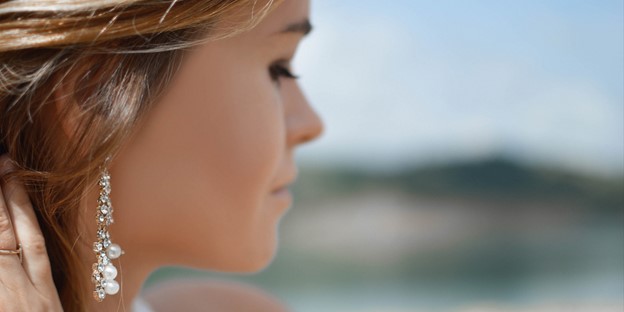
Image by: Yandex.com
Additionally, the initial cost of permanent jewelry can be higher than regular pieces due to the craftsmanship and materials involved. However, this cost is often offset by the longevity and sentimental value of the piece. Potential wearers should also consider the commitment involved, as removing permanent jewelry typically requires visiting a jeweler or using specialized tools.
Conclusion
Permanent jewelry represents a beautiful fusion of fashion and meaning. Its rise in popularity reflects a growing desire for accessories that are not only stylish but also deeply personal and enduring. By offering a lasting fashion statement, permanent jewelry stands as a testament to the moments, relationships, and values that we hold dear. As more people seek to make thoughtful and meaningful choices in their fashion, the appeal of permanent jewelry is likely to continue its upward trend, solidifying its place as a lasting staple in the world of accessories.
Fashion
Official Peaceinwar Store: Trendy Streetwear Fashion
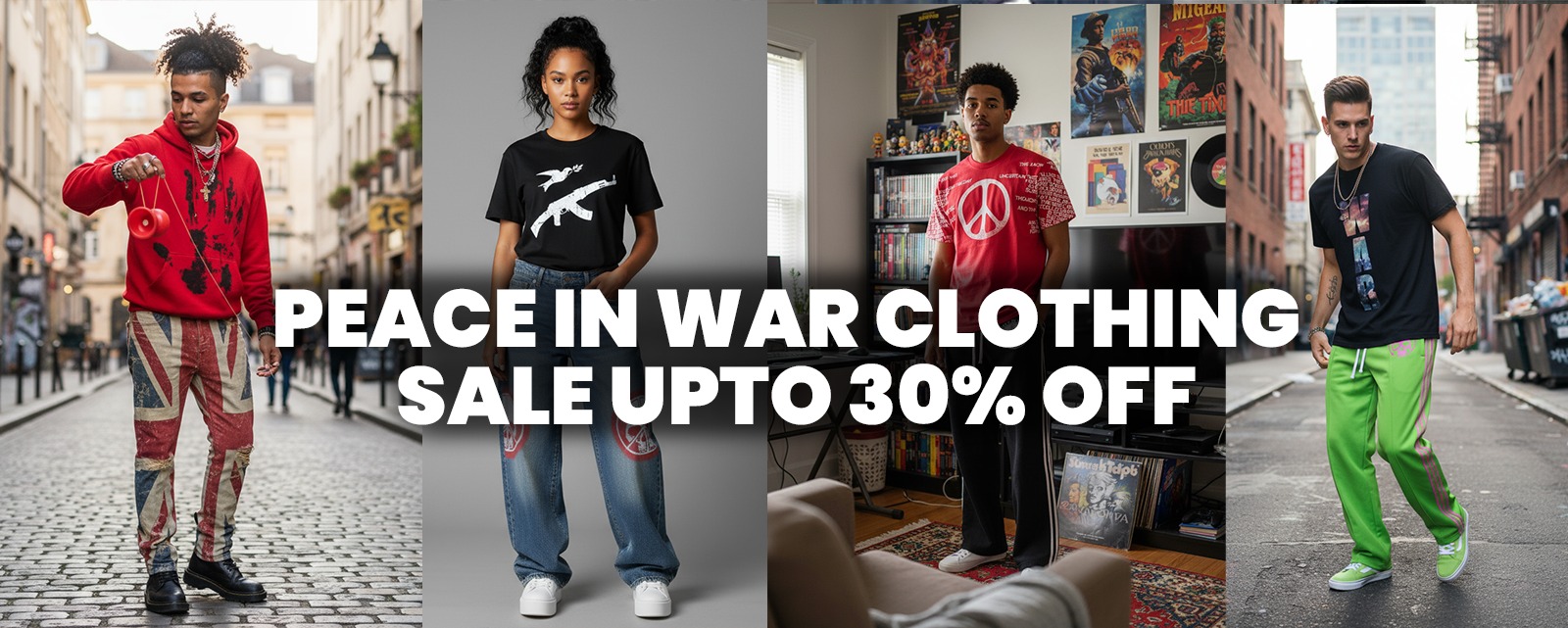
Introduction
Deputy Department, or Deputy Dept, is a modern streetwear brand known for bold designs and stylish looks. With urban-inspired aesthetics and high-quality materials, it has become popular with fashion fans, influencers, and trendsetters.
Deputy Dept is more than clothes—it’s about individuality, self-expression, and creativity. Each collection helps people make a statement while staying comfortable, stylish, and connected to culture.
The Vision Behind Deputy Dept
Deputy Dept is all about expressing yourself through fashion. The brand sees clothes as more than just fabric—they are a way to show personality, confidence, and authenticity.
From the start, Deputy Dept has focused on originality. Instead of mass-market items, it offers limited releases, exclusive designs, and high-quality materials, making each piece unique and stylish.
Deputy Dept Clothing: A Closer Look
Deputy Dept’s clothing line offers a variety of apparel, catering to diverse tastes while maintaining a cohesive streetwear identity. Popular categories include:
- Hoodies and Sweatshirts: Oversized fits, eye-catching graphics, and durable fabrics make these pieces staples in streetwear wardrobes.
- T-Shirts: Bold prints, artistic designs, and logo-centric styles define the brand’s T-shirt collection.
- Outerwear: Jackets and coats combine functionality with style, perfect for urban environments.
- Accessories: Beanies, caps, and backpacks complement the clothing line and enhance the streetwear aesthetic.
Each item reflects a careful balance of style, comfort, and statement-making design.
Quality and Craftsmanship
Quality is central to Deputy Department Clothing ethos. The brand uses premium fabrics and durable materials to ensure longevity and comfort. Every piece is designed with attention to detail, from precise stitching to high-quality prints and embroidery.
This commitment to craftsmanship distinguishes Deputy Dept from fast-fashion competitors. Customers know they are investing in apparel that not only looks stylish but also lasts over time, making each piece a worthwhile addition to their wardrobe.
Influences and Inspirations
Deputy Dept is inspired by urban culture, music, and modern art. Hip-hop, skateboarding, graffiti, and street life shape its edgy, contemporary designs.
The brand often collaborates with artists and creative thinkers. These partnerships bring new ideas and unique styles, keeping Deputy Dept fresh, innovative, and relevant in fashion.
Celebrity and Influencer Appeal
Deputy Dept is popular with celebrities and influencers. Musicians, athletes, and social media stars wear the brand, showing it is trendy and culturally relevant.
The brand is valued for being authentic and exclusive. Deputy Dept attracts people who want bold, original fashion that reflects modern street style. These public endorsements help the brand stay strong in global fashion trends.
The Shopping Experience
Deputy Department prioritizes a seamless shopping experience. Online, the brand offers high-quality visuals, detailed product descriptions, and user-friendly navigation. Limited releases and exclusive drops enhance the excitement of shopping online.
In select physical stores, Deputy Dept provides immersive retail experiences that reflect the brand’s urban identity. Store layouts, displays, and ambiance create an environment where customers can connect with the brand’s lifestyle beyond just the clothing.
Sustainability and Ethical Practices
While Deputy Dept is known for streetwear style, it also cares about sustainability. The brand focuses on making high-quality clothes that last, rather than producing a lot of fast fashion.
Deputy Dept uses ethical sourcing, durable materials, and responsible production. These efforts match the growing trend of conscious fashion and appeal to people who care about the environment.
Community and Culture
Deputy Dept focuses on connecting with the community. The brand works with local artists, joins cultural events, and shares content that speaks to its audience.
This helps Deputy Dept show that it’s more than just clothes—it’s about lifestyle, creativity, and urban culture. Fans often form close communities around the brand’s style and values.
Styling Deputy Dept Clothing
Deputy Dept clothing is versatile and easy to style. Its pieces can be combined to create distinct streetwear looks:
- Oversized hoodies paired with slim-fit jeans or cargo pants create a modern silhouette.
- Graphic T-shirts layered under jackets or flannels add dimension to everyday outfits.
- Accessories like caps, backpacks, and beanies complement the overall look and reinforce the streetwear aesthetic.
The brand’s focus on versatile design allows individuals to express personality while staying on-trend.
The Future of Deputy Department
Deputy Dept is growing fast, reaching more people around the world while staying true to its values. Future collections will include new creative collaborations and fresh designs, keeping the brand modern and connected to culture.
With its focus on quality, originality, and urban style, Deputy Dept will stay important in streetwear. The brand will keep evolving with fashion trends while staying true to its mission of self-expression and creativity.
Conclusion
Deputy Department, or Deputy Dept, is a streetwear brand known for its unique style and connection to urban culture. Their clothes are high-quality, bold, and help people express themselves.
They sell hoodies, T-shirts, jackets, and accessories, but it’s more than just clothing—it’s a lifestyle. The brand focuses on originality, good craftsmanship, and staying connected to culture, inspiring young, fashion-forward people.
If you want streetwear that is stylish, comfortable, and authentic, Deputy Dept is a brand that delivers.
Fashion
Upgrade Your Look with Chrome Hearts JP Clothing
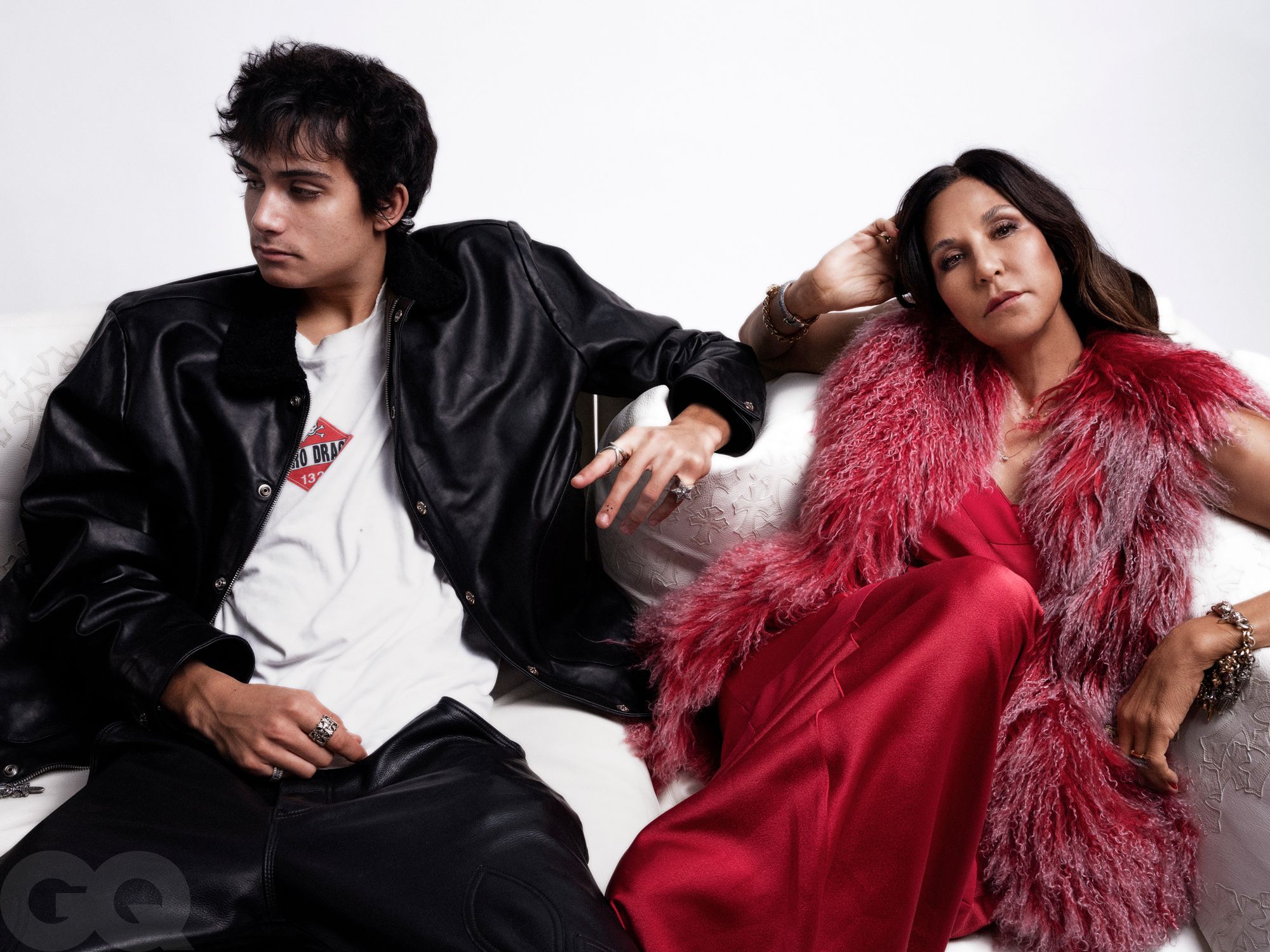
Introduction
Fashion is not just about clothes; it is about expressing yourself. Chrome Hearts JP clothing has become a symbol of bold, stylish, and unique fashion. Known for its edgy designs and premium quality, Chrome Hearts offers apparel that allows you to stand out. From jackets and hoodies to T-shirts and pants, every piece is crafted with attention to detail. If you want to upgrade your look and showcase your personal style, Chrome Hearts JP clothing is the perfect choice for fashion-forward individuals.
What Makes Chrome Hearts JP Clothing Special?
Chrome Hearts JP clothing stands out for several reasons. First, it uses high-quality materials, including premium cotton, leather, and unique fabrics that feel comfortable while lasting long. Second, the designs are bold and edgy, often featuring iconic symbols like crosses, fleur-de-lis, and gothic patterns. These designs give the clothing a distinct look that is instantly recognizable.
Every item is carefully crafted, combining traditional techniques with modern trends. This ensures that Chrome Hearts JP clothing not only looks good but also feels premium. Owning a piece of Chrome Hearts clothing is more than wearing fashion; it is making a statement.
Popular Chrome Hearts JP Clothing Collections
1. Jackets and Outerwear
Chrome Hearts jackets are perfect for those who want to combine style with functionality. From leather jackets with intricate details to casual hooded jackets, each piece adds a touch of boldness to your outfit. These jackets are designed to be versatile, making them suitable for both casual and semi-formal occasions.
2. Hoodies and Sweatshirts
Hoodies and sweatshirts are wardrobe essentials, and Chrome Hearts JP takes them to another level. With unique prints, embroidery, and logos, these pieces offer comfort without compromising style. They are perfect for streetwear fashion and can be paired with jeans, joggers, or shorts.
3. T-Shirts
T-shirts from Chrome Hearts JP clothing are more than just basic wear. Featuring artistic designs, logos, and patterns, they can transform a simple outfit into a bold statement. These T-shirts are available in a variety of colors and styles, making it easy to match your personal taste.
4. Pants and Bottoms
Chrome Hearts JP also offers pants that combine comfort with fashion. From casual joggers to tailored trousers, these pieces are designed to match the brand’s edgy style while providing excellent fit and comfort. Pair them with a hoodie or jacket for a complete look.
5. Accessories
No outfit is complete without the right accessories. Chrome Hearts JP clothing includes hats, belts, and scarves that complement their apparel. These accessories are crafted with the same attention to detail and bold designs as their clothing, helping you create a cohesive fashion statement.
Why Choose Chrome Hearts JP Clothing
1. Unique Style
Chrome Hearts JP clothing allows you to stand out in a crowd. The bold designs, iconic logos, and edgy patterns make it a favorite among fashion enthusiasts who want to express individuality.
2. High-Quality Materials
Durability and comfort are key aspects of Chrome Hearts JP clothing. Each piece is made using premium fabrics, ensuring it not only looks good but also lasts longer than typical fashion items.
3. Versatility
The clothing is designed to suit various occasions. You can wear jackets, hoodies, or T-shirts casually or dress them up for a more formal look. Chrome Hearts JP clothing makes it easy to create multiple styles from a single piece.
4. Celebrity and Influencer Appeal
Many celebrities and influencers wear Chrome Hearts JP clothing, which adds to its reputation as a trendy and desirable fashion brand. Wearing these pieces allows you to connect with the latest fashion trends and popular culture.
How to Style Chrome Hearts JP Clothing
1. Streetwear Look
Combine a Chrome Hearts hoodie with jeans and sneakers for a trendy streetwear style. Add a hat or chain accessory to complete the look.
2. Casual Everyday Look
Pair a stylish T-shirt with comfortable joggers or denim pants. This combination is simple, practical, and stylish for daily wear.
3. Edgy Outfit
Use jackets or leather pants from Chrome Hearts JP clothing to create an edgy look. Complement with boots and accessories to make a bold statement.
4. Layering Techniques
Layering can add depth to your outfit. For example, wear a T-shirt under a hoodie or a jacket over a printed T-shirt. Chrome Hearts JP clothing pieces are designed to layer well, offering both style and warmth.
Caring for Your Chrome Hearts JP Clothing
Proper care ensures your clothing lasts longer and maintains its quality:
- Follow washing instructions carefully to avoid damage.
- Store items in a cool, dry place to prevent fading and fabric wear.
- Avoid harsh detergents; use mild options for delicate fabrics.
- For leather items, use appropriate leather cleaners and conditioners.
- Handle embroidered or printed pieces with care to maintain their design integrity.
By taking care of your clothing, you can enjoy Chrome Hearts JP apparel for years while keeping it looking fresh and stylish.
Investing in Chrome Hearts JP Clothing
Investing in Chrome Hearts JP clothing is more than buying apparel; it is investing in style, quality, and uniqueness. While the price may be higher than regular clothing, the durability, design, and brand reputation make it worth the investment. Each piece can be considered a collectible, and owning multiple items allows you to mix and match for various looks.
For fashion-conscious individuals, Chrome Hearts JP clothing offers a balance of bold design and premium quality. By choosing these pieces, you not only upgrade your wardrobe but also elevate your personal style.
Conclusion
Chrome Hearts JP clothing is the perfect choice for those who want to upgrade their look with bold, stylish, and high-quality apparel. From jackets and hoodies to T-shirts, pants, and accessories, every piece is designed to make a fashion statement. With unique designs, premium materials, and versatile styling options, Chrome Hearts JP clothing helps you express individuality and confidence. Investing in these pieces means more than wearing clothes; it is about embracing a lifestyle of fashion-forward thinking and edgy elegance.
Fashion
Chrome Hearts Jewelry | Chrome Hearts Official Shop | 30% Off
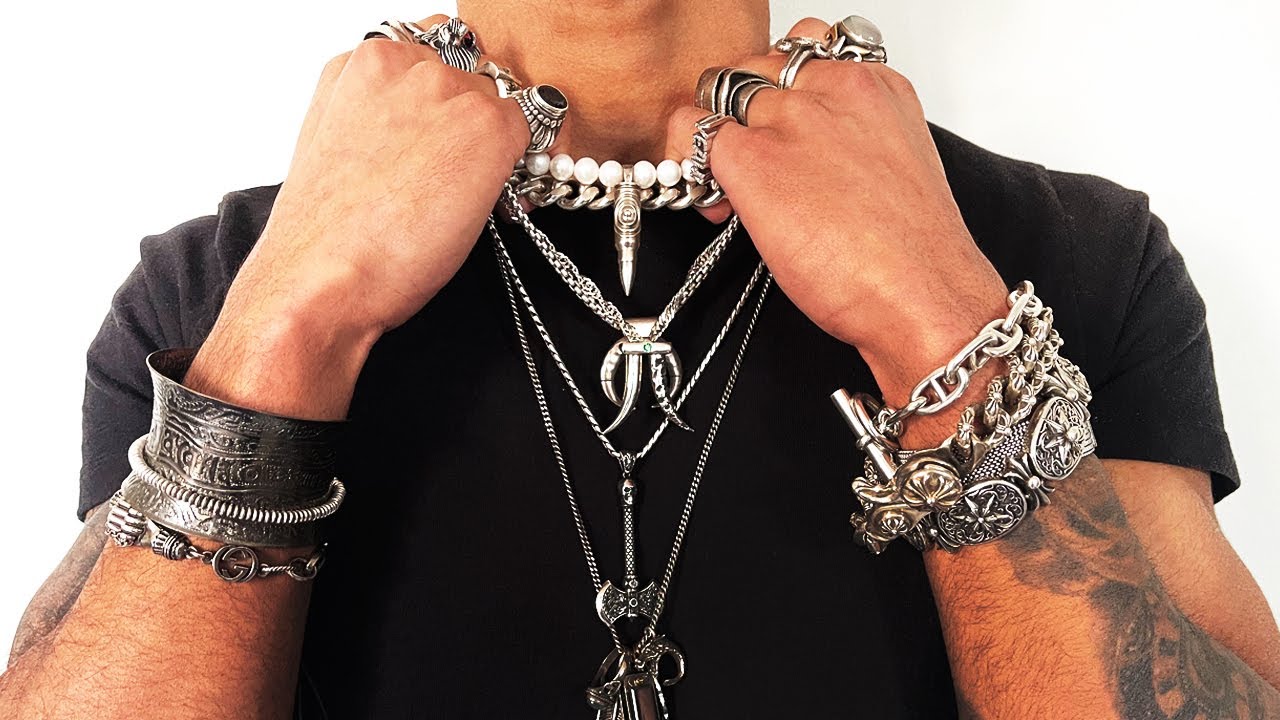
Introduction
Chrome Hearts is more than a luxury brand; it is a symbol of artistry, rebellion, and individuality. Founded in 1988 by Richard Stark in Los Angeles, the brand started as a small workshop creating leather accessories for motorcycle enthusiasts. Over the years, it has evolved into a global luxury brand, renowned for its high-quality jewelry, clothing, eyewear, and lifestyle products.
Chrome Hearts blends gothic-inspired designs with contemporary fashion. Its signature style—bold, edgy, and unmistakably unique—has made it a favorite among celebrities, collectors, and fashion aficionados worldwide.
The Origins of Chrome Hearts
Richard Stark founded Chrome Hearts with a vision of merging craftsmanship with counterculture. Originally, the focus was on custom leather jackets, belts, and motorcycle gear. However, the brand’s dedication to high-quality materials and attention to detail quickly set it apart.
Early collaborations with musicians and artists helped the brand gain recognition. These relationships, combined with limited production and meticulous craftsmanship, positioned Chrome Hearts as a brand that stood for authenticity and originality.
Why Chrome Hearts Jewelry Is Unique
Chrome Hearts stands out in the luxury jewelry market because of its attention to detail, handcrafted designs, and use of high-quality materials. Each piece is made with sterling silver, gold, and premium gemstones, ensuring durability and elegance. The designs often feature crosses, fleur-de-lis patterns, skulls, and other bold motifs that appeal to those who love a mix of luxury and rock-and-roll style.
Unlike mass-produced jewelry, Chrome Hearts pieces are handcrafted, which means every item is slightly unique. This craftsmanship ensures a high level of quality and makes each piece a collectible item. Wearing Chrome Hearts jewelry is not just about accessorizing; it’s about expressing individuality and bold fashion sense.
Popular Chrome Hearts Jewelry Collections
Chrome Hearts offers a variety of collections to suit different tastes and occasions. Some of the most popular include:
1. Rings
Chrome Hearts rings are among the most sought-after pieces. They range from statement rings with large crosses and skulls to more subtle bands with engraved details. Rings can be worn individually or stacked for a fashionable layered look.
2. Bracelets
Bracelets from Chrome Hearts add elegance and edge to any outfit. From thick chain link bracelets to delicate bangles, each piece is designed to stand out. Some bracelets include gemstones or intricate carvings that reflect the brand’s signature style.
3. Necklaces
Necklaces are central to the Chrome Hearts collection. Many feature pendants shaped like crosses, daggers, or hearts, often in sterling silver. They are perfect for layering or wearing as a single statement piece. Necklaces come in different lengths and styles to match your personal fashion preference.
4. Earrings
Chrome Hearts earrings are designed for both men and women who want a bold look. Hoops, studs, and dangling designs feature the brand’s iconic symbols. High-quality materials ensure they remain durable while maintaining their shine.
Handcrafted Excellence
One of the defining features of Chrome Hearts is its commitment to handcrafted excellence. Every piece, whether a silver ring, leather jacket, or sunglasses, is meticulously crafted in the brand’s workshops.
The artisans behind Chrome Hearts are masters of silversmithing, leatherwork, and jewelry design. Each item goes through careful design, engraving, and finishing processes, ensuring that every product is unique. This hands-on approach preserves the brand’s identity and enhances the value of its pieces.
Iconic Jewelry Designs
Chrome Hearts is perhaps best known for its jewelry. Its silver rings, crosses, and pendant designs are instantly recognizable. The brand combines gothic motifs with modern luxury, creating bold, statement pieces.
Common motifs in Chrome Hearts jewelry include:
- Crosses: Symbolizing strength, faith, and individuality.
- Daggers and skulls: Representing rebellion and edge.
- Floral and gothic designs: Highlighting detailed craftsmanship.
Unlike minimalist luxury brands, Chrome Hearts embraces boldness. Each piece is heavy, striking, and designed to leave an impression.
Celebrity Influence
Celebrities have played a significant role in the brand’s rise. Artists like Kanye West, Bella Hadid, Travis Scott, and Rihanna are frequently seen wearing Chrome Hearts Clothing. The brand’s association with influential figures has helped it reach a wider audience and maintain a high level of cultural relevance.
The appeal lies in exclusivity and craftsmanship. Chrome Hearts is not mass-produced, making it a prized possession for collectors and fans alike.
Clothing and Apparel
While jewelry brought Chrome Hearts fame, its clothing line has become a major component of the brand. Chrome Hearts apparel includes T-shirts, hoodies, jackets, and denim, all featuring the brand’s signature gothic designs.
Each garment combines comfort with style. Heavy fabrics, intricate prints, and leather accents create a luxurious feel. The clothing is versatile, allowing wearers to express individuality without compromising on quality or aesthetic appeal.
Eyewear and Accessories
Chrome Hearts eyewear has gained a cult following. The frames often feature silver or titanium accents, unique shapes, and bold detailing. More than functional eyewear, these pieces are designed to make a statement.
Other accessories, including belts, hats, and bags, carry the same meticulous attention to detail. Every product embodies Chrome Hearts’ philosophy: a mix of art, luxury, and rebellion.
Limited Production and Exclusivity
Part of Chrome Hearts’ allure is its exclusivity. The brand produces items in limited quantities, often only available in select stores. Some pieces are released as part of special collaborations or limited-edition collections.
This strategy enhances desirability. Fans are not only purchasing a product—they are acquiring a piece of art and a symbol of status. It also helps the brand maintain a loyal, dedicated following worldwide.
The Cultural Impact of Chrome Hearts
Chrome Hearts has influenced fashion, music, and pop culture. Its bold aesthetic has inspired designers across streetwear and luxury fashion. The brand’s identity rooted in individuality, craftsmanship, and counterculture resonates with those seeking alternatives to mainstream fashion.
Beyond clothing and jewelry, Chrome Hearts has also ventured into lifestyle products, including home décor and furniture, maintaining the same artisanal quality and unique design.
Shopping Experience
Chrome Hearts boutiques are designed as immersive experiences. Each store features custom woodwork, gothic architecture, and curated displays. This approach transforms shopping into an artful, engaging experience.
Online, Chrome Hearts maintains a carefully curated digital presence. Limited availability, high-quality visuals, and detailed product descriptions ensure that the online experience mirrors the brand’s premium identity.
Sustainability and Craftsmanship
Although Chrome Hearts primarily focuses on luxury and craftsmanship, it also emphasizes longevity. The brand’s products are made to last a lifetime, reducing the need for frequent replacements. This commitment to quality aligns with sustainable principles, even if the brand does not label itself as eco-focused.
By investing in pieces that endure, Chrome Hearts encourages consumers to value craftsmanship and longevity over mass production.
The Future of Chrome Hearts
As Chrome Hearts continues to expand, its influence on fashion and culture remains strong. Upcoming collections are expected to maintain the brand’s signature bold designs while exploring new collaborations and artistic ventures.
Its enduring appeal lies in authenticity. By staying true to its roots, valuing craftsmanship, and embracing individuality, Chrome Hearts continues to set the standard in luxury streetwear and jewelry.
Conclusion
Chrome Hearts is a unique blend of luxury, artistry, and counterculture. From handcrafted silver jewelry to gothic-inspired clothing and accessories, the brand embodies individuality and creativity. Its exclusivity, attention to detail, and cultural influence make it a standout in the global fashion industry.
For those seeking bold, statement-making pieces, Chrome Hearts offers more than fashion it offers a lifestyle. Its commitment to craftsmanship, design, and authenticity ensures that it remains a symbol of luxury and rebellion for decades to come.
-
Business2 years ago
Cybersecurity Consulting Company SequelNet Provides Critical IT Support Services to Medical Billing Firm, Medical Optimum
-
Business2 years ago
Team Communication Software Transforms Operations at Finance Innovate
-
Business2 years ago
Project Management Tool Transforms Long Island Business
-
Business2 years ago
How Alleviate Poverty Utilized IPPBX’s All-in-One Solution to Transform Lives in New York City
-
health3 years ago
Breast Cancer: The Imperative Role of Mammograms in Screening and Early Detection
-
Sports3 years ago
Unstoppable Collaboration: D.C.’s Citi Open and Silicon Valley Classic Unite to Propel Women’s Tennis to New Heights
-
Art /Entertainment3 years ago
Embracing Renewal: Sizdabedar Celebrations Unite Iranians in New York’s Eisenhower Park
-
Finance3 years ago
The Benefits of Starting a Side Hustle for Financial Freedom






























